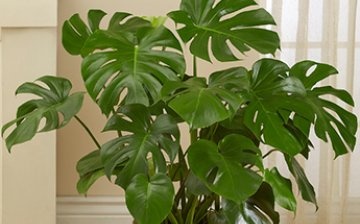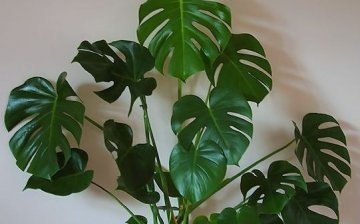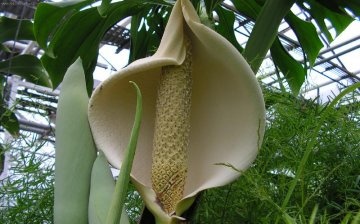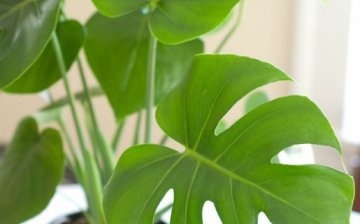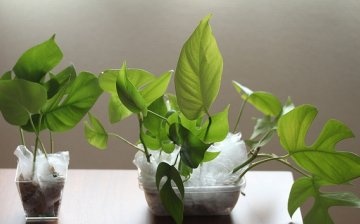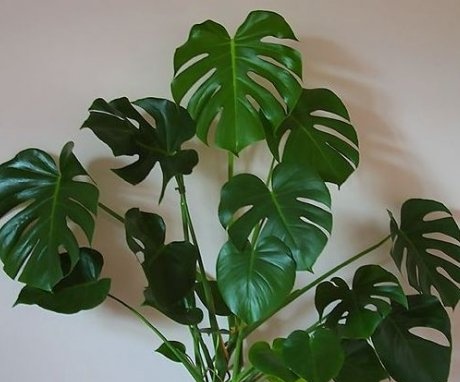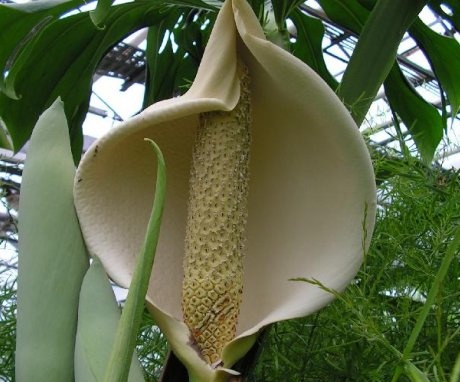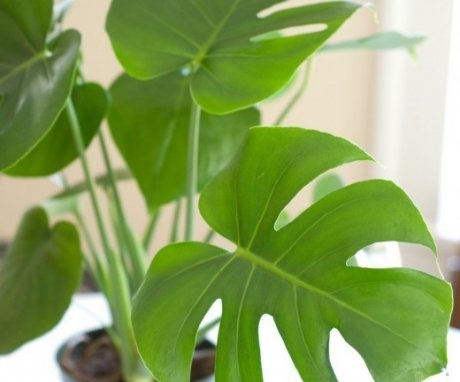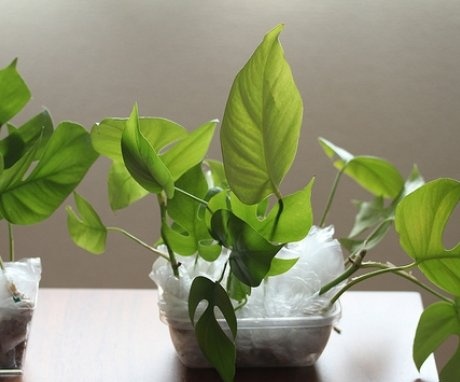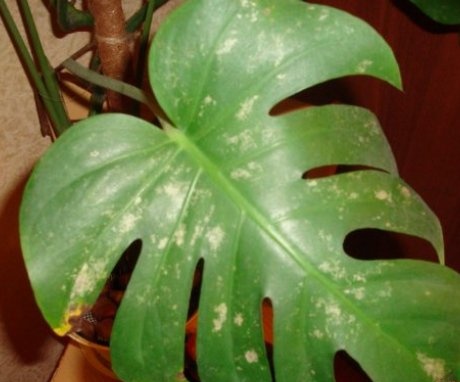Monstera leaves turn yellow: causes and solutions to the disease
Monstera is a large vine that belongs to the Aroid family. Its homeland is the equatorial part of America. In Europe, monstera appeared only in the 18th century and quickly spread throughout the continent. In the modern world, this plant is one of the most common for indoor and garden landscaping.
Content:
- General information about the monster
- Types of monstera
- Plant care
- Breeding monstera
- Why do monstera leaves turn yellow?
General information about the monster
Evergreen, with large carved leaves, monstera will decorate any room. The large thick trunk of the vine grows 5 meters in length at home and 9 meters in nature. Aerial roots form on the stems, thanks to which the plant receives moisture from the environment. The leaves are large, heart-shaped and arranged on long, thick petioles.
Only the opened young leaf does not have cuts, but with age, cuts appear, and after an adult large leaf becomes openwork cut.
In length, they can reach 90 cm. Monstera blooms mainly only in natural conditions. The inflorescence resembles an ear, which is covered with a blanket of soft cream color. Fruits form and ripen 10-11 months after flowering.
They can be eaten, they taste a little similar to pineapple, but you should be careful, as an unripe fruit can burn the mucous membrane of the mouth.
Types of monstera
Scientists are still studying the monstera and almost every year new species of this plant are discovered:
- Monstera Adansona. Liana, which can stretch up to 8 meters in height. Leaves are medium in size, thin, cut from the edge almost to the very middle along the entire perimeter. The maximum size is 55 cm by 40 cm. It is painted green, the structure is fine, the shape is ovoid. At home, flowering is rare. The ear is located on a short peduncle and is colored yellow.
- Monstera is delicious. This variety is distinguished by especially large and cut leaves. In nature, it reaches 10 meters in length, approximately the same size can be obtained by growing a monster in a greenhouse. At home, the maximum length is 3 m. The shape of the leaves is heart-shaped, in diameter it can reach 60 cm. The ear of the inflorescence grows 25 cm in height, the petal of the bedspread is painted in a white tone. The color of the leaves of the monstera gourmet green, and the monstera gourmet "Variegata" can be marble, with large white spots or white-green color.
- Monstera Borziga. This is a hybrid variety bred for home use. The size of the Borzig monstera is much smaller than the main natural species. The leaves reach only 30 cm in diameter, are slightly indented, whole at a young age. The stems are thin.
- Monstera is oblique. This species is native to Brazil. Liana is medium in size, with a strong stem. Leaves are oblong-oval, dissected. One half of the sheet is always larger than the other. Painted dark green. Leaf length 20 cm, width 8 cm. The ear is located on a short peduncle.
- Monstera is full of holes. A large liana with a thick stem and leaf stalks. The shape of the leaves is ovoid, oblong. There are holes and cuts throughout the plate, the leaves are painted in a dark green tone.The ear is located on the peduncle along with a white blanket, the length of which can reach 20 cm.
Plant care
Monsters of any kind and variety are easy to grow at home. They are undemanding to care. The temperature regime for the monstera may not be maintained. But it should be borne in mind that in the cold it will die, and at high temperatures and good watering it will grow rapidly. Optimal for her is 14-17 degrees.
Watering the plant:
- During the winter and cold fall months, watering should be moderate, but the earthen ball should be slightly damp.
- From spring to autumn, the soil should be well moistened.
- Water regularly with soft water.
- There should be humid air around the plant.
- To do this, the leaves are sprayed from a spray bottle, and sometimes wiped with a damp sponge from dust.
- It is especially important to carry out these procedures during the heating season, when the air is especially dry.
The lighting for the monstera needs to be bright, but direct sunlight is harmful for her. It is also not worth putting it in a dark place in the room, mistakenly believing that the plant is shade-loving.
In the spring-summer period, the plant must be fed with complex fertilizers.
For young plants, this process is carried out once every 2 weeks, for adults, once a month.
Breeding monstera
Breeding monstera is easy thanks to aerial rootslocated throughout the stem. The upper part of the vine is cut off so that there are air roots, a leaf and an internode on the separated part. You can root in water.
Many young roots appear from aerial roots in 2 weeks.
Then the cutting can be planted in a pot with prepared soil. Transplanted to the monster only as needed. The plant does not tolerate frequent transplants, but grows intensively. Therefore, when planting a pot, you must choose a large one for growth.
Why do monstera leaves turn yellow?
If the leaves of the monstera turn yellow, then it is necessary to reduce watering.
Also, dry spots can appear with burns from sunlight, then the plants are shaded. In winter, the edges of the leaves can dry out from too dry air.
Regularly humidifying the air and rubbing the leaves with a damp sponge will solve this problem. The plant will slow down growth if there is little room for the roots in the pot or insufficient nutrition.
With regular overflow, monstera begin to cry and wither leaves and stems.
Watering should be reduced, but still do not let the earthy coma dry out completely, especially in the summer. If black dots appear on the inside of the leaf, then the plant is affected by a spider mite. Monster needs to be processed antiparasitic drug... You can also wash the leaves with soapy water. For a good effect, this procedure is carried out 2-3 times.
More information can be found in the video.



